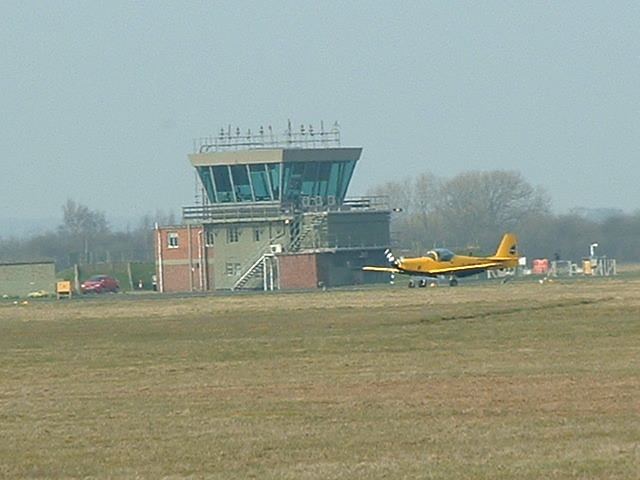Airport type Private Operator Makin Enterprises Elevation AMSL 30 ft / 9 m Phone +44 1937 534194 | Owner Makin Enterprises Elevation 9 m | |
 | ||
Similar Church Fenton, Leeds East Academy, Sherburn Aero Club, Makins, The White Horse Profiles | ||
Vulcan xh558 yorkshire air show leeds east airport church fenton yorkshire england 26 09 15
Leeds East Airport Church Fenton (ICAO: EGCM), formerly known as RAF Church Fenton, is an airport and former Royal Air Force station located 4.3 miles (6.9 km) south east of Tadcaster, North Yorkshire, England and 6.3 miles (10.1 km) north west of Selby, North Yorkshire, near the village of Church Fenton. The airport had a licensing application from The UK Civil Aviation Authority rejected. Which means plans to allow regular scheduled passenger flights and charter flights to various European destinations have been scrapped.
Contents
- Vulcan xh558 yorkshire air show leeds east airport church fenton yorkshire england 26 09 15
- Nicks first approach into leeds east airport formerly raf church fenton
- Prewar
- Second World War
- Postwar
- 20032013
- Yorkshire Universities Air Squadron and ATC
- Current use
- Current operational units
- References
Nicks first approach into leeds east airport formerly raf church fenton
Prewar
Plans for a new airfield adjacent to the village of Church Fenton were announced in June 1935, it was subject to protest from the local population particularly concerning the waste of valuable farming land and was close to an existing airfield 2 mi (3.2 km) away at Sherburn. Despite the protests construction started in early 1936 on the 260 acres (1.1 km2) site, a mixture of private and West Riding County Council-owned farm land.
On 1 April 1937 the station was declared open and on 19 April the first station commander Wing Commander W.E. Swann assumed command. Within two months No. 71 Squadron RAF had arrived with the Gloster Gladiator.
Second World War
Opened in 1937, it saw the peak of its activity during the years of the Second World War, when it served within the defence network of fighter bases of the RAF providing protection for the Leeds, Bradford, Sheffield and Humberside industrial regions.
During September 1940 it became home to the first RAF "Eagle squadron" of American volunteers being No. 71 Squadron RAF initially with the Brewster Buffalo I for one month before changing to the Hawker Hurricane I. The airfield was also home to both the first all-Canadian and all-Polish squadrons, with No. 242 Squadron RAF for the Canadians and No. 306 Squadron RAF for the Polish.
As technologies evolved, the first night fighter Operational Training Unit (No. 54 OTU) was formed at Church Fenton in 1940 and stayed until 1942. Some of the squadrons stationed there flew the famous de Havilland Mosquito.
The following squadrons were also posted here at some point:
Postwar
After the war it at first retained its role as a fighter base, being among the first to receive modern jet aircraft, namely the Gloster Meteor and the Hawker Hunter. Between October 1950 and March 1957 it was the base of No. 609 Squadron RAF, within the Royal Auxiliary Air Force and named "North Riding". The unit was equipped with Gloster Meteors.
In later years, its role was mainly flight training. No. 7 Flying Training School was based here between 1962 and 1966 and again between 1979 and 1992, equipped with Hunting Aircraft Jet Provost T3 trainers.
For some years it was home to the Royal Navy Elementary Flying Training School (RNEFTS) using the Scottish Aviation Bulldog, and again 1979-1992, triggered by the introduction of the Panavia Tornado, being the first station to receive the new turboprop-powered Short Tucano T.1 basic fast jet trainers. From 1998-2003 Church Fenton was the RAF's main Elementary Flying Training airfield.
The following squadrons were also posted here at some point:
2003–2013
On 25 March 2013 it was announced that Church Fenton would close by the end of 2013. The units would be relocated to RAF Linton on Ouse by 31 December 2013.
By 19 December 2013, all units had relocated and the airfield was closed. Some equipment will be relocated to RAF Topcliffe. MoD security continued to secure the site until disposal. A NOTAM was issued suspending the air traffic zone (ATZ) at the end of 2013.
Yorkshire Universities Air Squadron and ATC
The station was home to Yorkshire Universities Air Squadron and it is from there that they used to conduct their flying training in the Grob Tutor Aircraft. Much of the station is now derelict and fenced off and the Officers Mess has been demolished. The airside section of the station is closed with various hangars incorporating YUAS’s aircraft, engineering support, fire/ambulance facilities and a sports hangar. The station used to have a fully functioning and manned Air Traffic Control Tower.
The Station headquarters remains and used to incorporate YUAS’s administration, presentation and social facilities. There was a canteen facility known as the "Feeder" and a basic accommodation block. Yorkshire UAS ceased operations at RAF Church Fenton on 19 December 2013, following the closure of the airfield.
RAF Church Fenton, now Leeds East Airport, is also home to 2434 (Church Fenton) Squadron Air Training Corps.
Current use
The site was sold on 23 December 2014 to Makins Yorkshire Strawberries with the exception of a section containing the Air Cadets. Makins intends to keep the airfield operational.
In February 2015, Makins Enterprises (the new airfield owners) launched their new website, renaming the airfield. It will now be known as 'Leeds East Airport', with the slogan "Yorkshire's newest aviation destination." It is believed that Makins Enterprises will target the business jet market, while also running a flying school and other ventures.
